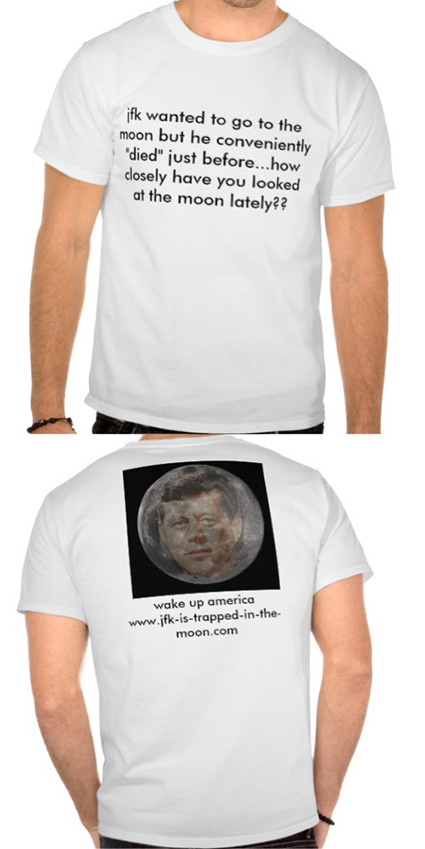
Animals eject fluids for waste elimination, communication, and defense from predators. These diverse systems all rely on the fundamental principles of fluid mechanics, which we use to predict urination duration across a wide range of mammals. […]
Using high-speed videography and flow-rate measurement obtained at Zoo Atlanta, we discover that all mammals above 3 kg in weight empty their bladders over nearly constant duration of 21 s. […]
Smaller mammals are challenged during urination by high viscous and capillary forces that limit their urine to single drops.
{ PNAS | Continue reading }
collage { imp kerr }
animals, science |
September 9th, 2015

After London’s 2011 riots, the superrecognizers combed through thousands of hours of footage; Collins alone identified an incredible 190 faces among the rioters. Today, Neville heads London’s central forensic image team, which has tested thousands of police officers and identified 152 super-recognizers. These face-spotting stars normally work in their local stations, building up a mental library of the area’s criminals, and periodically attach to New Scotland Yard to solve crimes.
{ National Geographic | Continue reading }
crime, faces |
September 7th, 2015

You see a man at the grocery store. Is that the fellow you went to college with or just a guy who looks like him? One tiny spot in the brain has the answer.
Neuroscientists have identified the part of the hippocampus that creates and processes this type of memory, furthering our understanding of how the mind works, and what’s going wrong when it doesn’t.
{ Lunatic Laboratories | Continue reading }
memory, neurosciences |
August 19th, 2015

Artificial-intelligence researchers have long struggled to make computers perform a task that is simple for humans: picking out one person’s speech when multiple people nearby are talking simultaneously.
It is called the ‘cocktail-party problem’. Typical approaches to solving it have either involved systems with multiple microphones, which distinguish speakers based on their position in a room, or complex artificial-intelligence algorithms that try to separate different voices on a recording.
But the latest invention is a simple 3D-printed device that can pinpoint the origin of a sound without the need for any sophisticated electronics.
{ Nature | Continue reading }
photos { 1 | 2. Yo-landi Visser photographed by Pierre Debusschere }
3D printing, noise and signals |
August 18th, 2015

State-of-the-art forensic technology from South Africa has been used to try and unravel the mystery of what was smoked in tobacco pipes found in the Stratford-upon-Avon garden of William Shakespeare.
Residue from clay tobacco pipes more than 400 years old from the playwright’s garden were analysed. […] Results of this study (including 24 pipe fragments) indicated cannabis in eight samples, nicotine in at least one sample, and in two samples definite evidence for Peruvian cocaine from coca leaves.
{ The Independent | Continue reading }
photos { 1 | John K. }
books, drugs, flashback, smoking |
August 10th, 2015

Stanley: I lost my brother years ago
Ford: (from the other room) QUIT TELLING PEOPLE I’M DEAD
Stanley: Sometimes I can still hear his voice
{ Cyclone Rachel }
elephants, experience, haha |
August 10th, 2015

Around 1930, the director of an evening newspaper had hired Georges Simenon as an advertising attraction. He’d had a cage constructed in the hall of his newspaper where Simenon, under eyes of the public, was to write a serial, non-stop. But on the eve of the big day, the newspaper went bankrupt. Simenon wrote the book in his room.
{ Paris Match | Continue reading }
In 1927 the publisher of Paris-Soir proposed to place Simenon in a glass cage, where he would spend three days and three nights writing a novel in public.
{ NY Times | Continue reading }
photo { Mark Heithoff }
art, books, flashback |
August 7th, 2015

Dogs can infer the name of an object and have been shown to learn the names of over 1,000 objects. Dogs can follow the human pointing gesture; even nine week old puppies can follow a basic human pointing gesture without being taught.
New Guinea Singing dogs, a half-wild proto-dog endemic to the remote alpine regions of New Guinea, as well as Dingoes in the remote outback of Australia are also capable of this.
These examples demonstrate an ability to read human gestures that arose early in domestication and did not require human selection. “Humans did not develop dogs, we only fine-tuned them down the road.”
Similar to the chimpanzee, Bonobos are a close genetic cousin to humans. Unlike the chimpanzee, bonobos are not aggressive and do not participate in lethal intergroup aggression or kill within their own group. The most distinctive features of a bonobo are its cranium, which is 15% smaller than a chimpanzee’s, and its less aggressive and more playful behavior. Dogs mirror these differences relative to wild wolves: a dog’s cranium is 15% smaller than an equally heavy wolf’s, and the dog is less aggressive and more playful. The guinea pig’s cranium is 13% smaller than its wild cousin the cavie and domestic fowl show a similar reduction to their wild cousins. Possession of a smaller cranium for holding a smaller brain is a telltale sign of domestication. Bonobos appear to have domesticated themselves.
In the “farm fox” experiment, humans selectively bred foxes against aggression which caused a domestication syndrome. The foxes were not selectively bred for smaller craniums and teeth, floppy ears, or skills at using human gestures but these traits were demonstrated in the friendly foxes.
Natural selection favors those that are the most successful at reproducing, not the most aggressive. Selection against aggression made possible the ability to cooperate and communicate among foxes, dogs and bonobos. Perhaps it did the same thing for humans.
{ Wikipedia | Continue reading }
animals, flashback, theory |
August 6th, 2015

Hospitality is always a matter of urgency, always a question of speeds. The unexpected guests arrive and there is always a rush of activity: a hurried welcoming at the door, a quick cleaning up, a surreptitious rearranging or putting back into order, a preparing of food and drink. But even when the guest is expected, has been expected for a long time, there is a sense of urgency. The guests arrive — always too early or too late, even if they are ‘on time.’ Coats are taken; tours are given of the immaculate, impossibly ordered home; drinks are served, food presented. For there to be a place for hospitality, for hospitality to take (the) place, the host must hurry.
{ Sean Gaston | via Austerity Kitchen/TNI | Continue reading }
food, drinks, restaurants, household, ideas |
August 6th, 2015

An experiment was carried out in a French bar. A waitress briefly touched (or not) the forearm of a patron when asking him/her what he/she want to drink. Results show that touch increases tipping behavior although giving a tip to a waitress in a bar is unusual in France. The familiarity of tactile contact in France was used to explain our results.
{ International Journal of Hospitality Management | Continue reading }
still { Ingmar Bergman, The Passion of Anna, 1969 }
economics, psychology |
August 5th, 2015

“Despite the common belief that remembering our mistakes will help us make better decisions in the present,” says the study’s lead author, “we actually find that thinking about our failures at self-control leads us to repeat them and indulge in the present, so it’s not helpful at all.”
{ EurekAlert | Continue reading }
psychology |
August 5th, 2015

Criminal investigations often use photographic evidence to identify suspects. Here we combined robust face perception and high-resolution photography to mine face photographs for hidden information. By zooming in on high-resolution face photographs, we were able to recover images of unseen bystanders from reflections in the subjects’ eyes.
To establish whether these bystanders could be identified from the reflection images, we presented them as stimuli in a face matching task (Experiment 1). Accuracy in the face matching task was well above chance (50%), despite the unpromising source of the stimuli. […] In a test of spontaneous recognition (Experiment 2), observers could reliably name a familiar face from an eye reflection image.
For crimes in which the victims are photographed (e.g., hostage taking, child sex abuse), reflections in the eyes of the photographic subject could help to identify perpetrators.
{ PLOS | Continue reading }
crime, eyes |
August 5th, 2015

One woman reported having 8 car accidents in one 150 mile journey. She was also unlucky in love. After joining a dating agency, her first date fell off his motorcycle and broke his leg. The second date walked into a glass door and broke his nose. Eventually she met her future husband and the church they were going to get married in burned down the day before the wedding. […]
In total, 80 percent of people who attended Luck School said that their luck had increased. […]
Lucky people just try stuff.
{ Barking Up The Wrong Tree | Continue reading }
experience, guide |
July 31st, 2015

A mezuzah is a small case affixed to the doorframe of each room in Jewish homes and workplaces which contains a tiny scroll of parchment inscribed with a prayer. It is customary for religious Jews to touch the mezuzah every time they pass through a door and kiss the fingers that touched it. However, kissing the mezuzah has also become customary for many secular Jews who think of the mezuzah as a good luck charm.
In view of a recent revelation that kissing the mezuzah entails a health hazard, the present paper inquires whether it also has some observable benefit. In an experiment conducted among non-religious mezuzah-kissing economics and business students confronted with a logic-problem exam, some were allowed to kiss the mezuzah before taking the exam, whereas the others were asked not to do so or could not do so because it had been removed from the room doorframe. The experiment revealed that participants who did not kiss the mezuzah performed worse than those who kissed it, and that the stronger is one’s belief in the mezuzah’s luck-enhancing properties, the better he performs when he kisses it but the worse he performs when he does not.
{ Journal of Economic Behavior & Organization | Continue reading }
psychology |
July 30th, 2015

There’s been a ton of news recently about how awesome coffee can be for many aspects of your health – heart disease, longevity, depression, Type 2 diabetes, Parkinson’s. The scientific data has been so strong that the nation’s top nutrition panel recommended earlier this year that people might even want to consider drinking a bit more.
Now comes a sobering report.
In a study evaluating 1,445 people, scientists found that consistently drinking one to two cups of coffee each day is associated with a significant reduction in the risk of mild cognitive impairment (MCI) — a precursor to dementia and Alzheimer’s — compared to those who never or rarely consumed coffee. That supports previous work, published in 2010, that showed that caffeine may have a neuroprotective effect.
The surprise was that participants who increased their consumption over time saw their risk of mild cognitive impairment shoot up significantly. Those who went from one cup to more than one cup had twice the rate of MCI as those who reduced their drinking to less than one cup and 1.5 times the rate of MCI as those who continued to drink one cup a day.
{ Washington Post | Continue reading }
watercolor and gouache on paper { Sam Francis, Black and So On, 1958 }
food, drinks, restaurants |
July 30th, 2015

We meta-analyzed the effects of sexual media, violent media, sexual ads, and violent ads on the advertising outcomes of brand memory, brand attitudes, and buying intentions. The meta-analysis included 53 experiments involving 8,489 participants.
Analyses found that brands advertised in violent media content were remembered less often, evaluated less favorably, and less likely to be purchased than brands advertised in nonviolent, nonsexual media. Brands advertised using sexual ads were evaluated less favorably than brands advertised using nonviolent, nonsexual ads. There were no significant effects of sexual media on memory or buying intentions. There were no significant effects of sexual or violent ads on memory or buying intentions.
As intensity of sexual ad content increased, memory, attitudes, and buying intentions decreased.
When media content and ad content were congruent (e.g., violent ad in a violent program), memory improved and buying intentions increased.
Violence and sex never helped and often hurt ad effectiveness.
{ Psychological Bulletin/American Psychological Association | PDF }
related { Allegation that ad-serving companies deliberately slow down web pages to maximise profit }
economics, marketing, media, psychology |
July 30th, 2015






















